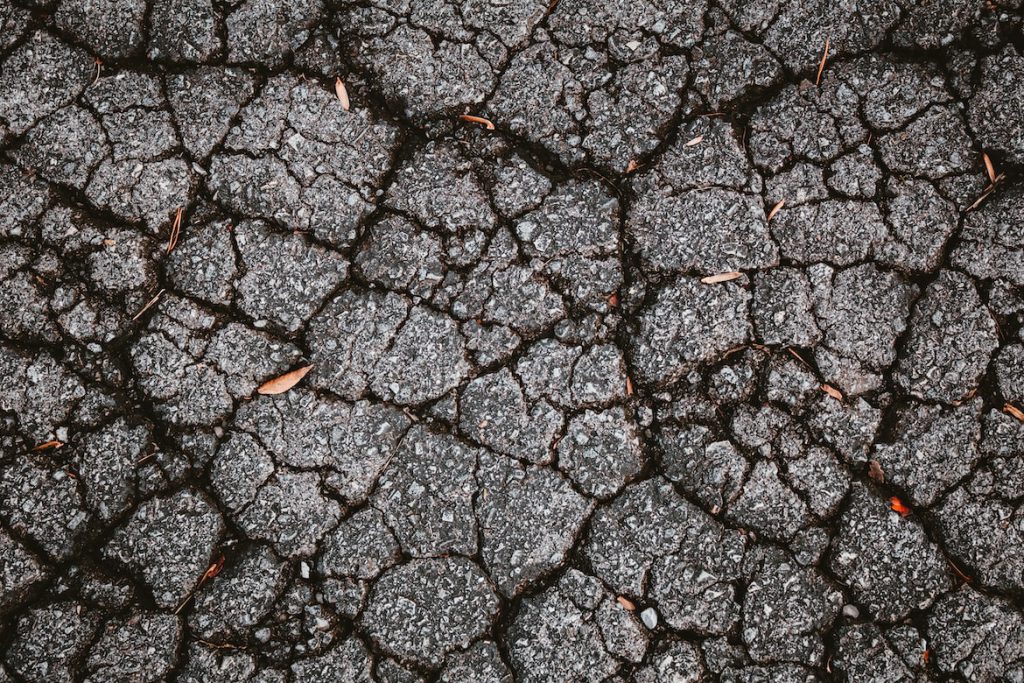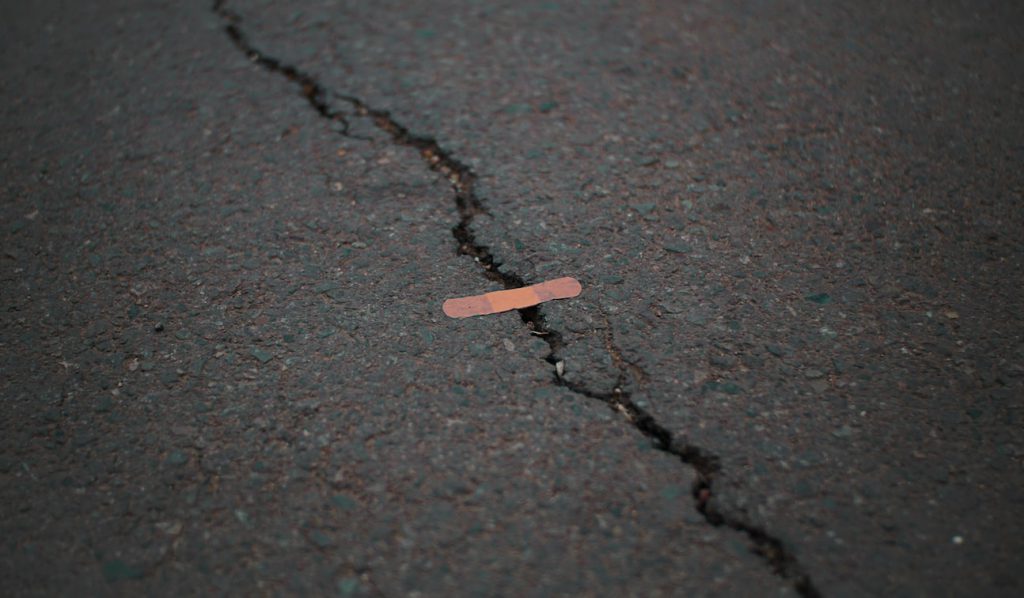Every structure with an asphalt driveway or parking lot must maintain its asphalt. When properly installed and maintained, asphalt pavement can endure over 20 years. However, you still need to keep it consistent over time. Ideally, it would be best to reseal your driveway every three years, but asphalt driveway cracks and bumps tend to form often and need repair and maintenance more regularly.
If you do not repair a crack in your driveway, the crack is likely to grow over time. Because the stresses that generated the first break continue to exert pressure on the pavement, cracks spread. Moisture penetrating a cracked pavement often expands as it freezes or evaporates, causing the pavement to separate.
Any location with cracked pavement should take precautionary measures to prevent further damage. Good asphalt upkeep discourages new cracks.
What is an Asphalt Driveway?
Asphalt is a typical material for driveways and roads because it is inexpensive and straightforward to install. It is a combination of bitumen and aggregate stone. The mixture might be chilly or heated.
Asphalt is 100% recyclable, making it an environmentally friendly product and porous, enabling water to soak into the soil underneath.
Asphalt is typically laid on a soil and stone foundation that has been prepared to be as sturdy and smooth as possible. In certain instances, it can be run straight onto an existing concrete driveway. However, it is not recommended due to cracking problems.

Image source: https://unsplash.com/photos/3Ignkeds3w8
How to Fix Cracks and Bumps in Your Pavement?
Get a Third-Party Service to Seal the Asphalt
Asphalt roads will inevitably oxidize. It is a normal part of the product’s aging process. When the driveway is exposed to sunlight, oxidation can occur, leading to the black surface fading and greying.
In most circumstances, this can take several years, but if your driveway is frequently exposed to intense sunlight, it can fade considerably faster.
You can, however, slow down the process by sealing the asphalt once it has been poured. This can be done by a professional asphalt driveway paving repair company through sealants. These professionals have the necessary tools and expertise to undertake such a complex procedure and ensure quality.
Moreover, an experienced third-party repair company can examine the damage, decide the most effective course of action, and relieve you of the arduous work of restoring your asphalt driveway paving.
Here is what is involved when sealing the cracks in your driveway.
- Remove any debris
Remove weeds growing through the gaps by hand or with a string trimmer. Use a screwdriver or shovel to remove pebbles, mud, and other impediments. Also, reduce the height of any dirt or gravel in the cracks to flush with the surface.
- Wipe off the surface
If there are tenacious stains on the driveway, remove the oil with the oil cleaner. Apply the asphalt cleanser, then pressure-wash the surface completely. Wait until the driveway’s surface is thoroughly dry. As with other tasks requiring a coating, a thorough washing ensures the asphalt sealant adheres more effectively.
- Fill up the large holes
If significant holes need to be filled, use the cold asphalt patch. This thick substance can be poured directly from the bag and does not require heating. Consult the package for specific curing directions.
- Seal the cracks
The asphalt crack sealant is applied to the cracks. Elastomeric sealants have a rubbery feel and contract and expand with the driveway.
- Apply the first sealant coat
Seal the driveway by spreading asphalt sealer with the squeegee in a series of passes parallel to the house. Next, allow the sealant to dry according to the product’s directions.
- Apply the second sealant coat
After the initial layer has hardened, seal the driveway using the squeegee to spread asphalt sealer perpendicular to the house in a series of passes. Allow this second coat to dry according to the product’s instructions.
Before driving on the newly-sealed driveway, you may be required to wait up to 48 hours.

Image source: https://unsplash.com/photos/nv6W9GCdHQQ
Patching
Patching is the process of fixing potholes and excavated asphalt pavement sections. Swift repair of potholes and other pavement damage helps prevent additional deterioration and costly repairs. In the absence of timely patching, water can seep into the subgrade and create greater and more severe pavement failures.
A full-depth or deep patch is considered a lasting repair, unlike a thin surface patch or a “throw and go” pothole repair. Patching materials include hot mix asphalt emulsion mixes, stockpile patching mixes, and bespoke patching mixes with unique aggregate and modified binders.
Moreover, full-depth patching involves the removal of the whole surface layer of the pavement, regardless of its thickness, over the patching area. Deep patching consists of removing four inches or more of the surface course of the pavement.
Full-depth patching applies to asphalt and concrete pavements, whereas deep patching is exclusive to asphalt pavements.
Fill the Cracks Using Crackfill Solution
Crackfill is a solution of superheated rubber that is forced into cracks to adhere both sides together. Professionals inject crack files into asphalt pavement cracks to fill them. As the solution cools, it contracts and creates a watertight seal by pulling the sides of the crack together.
Crackfill, because of its adhesive properties, both fills the crack and prevents the asphalt from cracking further along the same lines. It is the optimal method for preserving asphalt, providing a rapid and effective solution to widening pavement fractures.
The rubber solution also prevents moisture from entering the crack from the top or sides. Due to its reaction to the weather, moisture within your asphalt stratum is terrible news. When heated or frozen, water molecules expand and then constrict again.
Asphalt pavement cracks, potholes, and depressions are caused mainly by moisture in the sub-base. However, crack fill stops moisture from penetrating mended cracks, shielding the remainder of your asphalt from the damage.
You can inject a crack fill solution into the cracks and allow it to dry completely. Crackfill strengthens the gap between cracks, limiting further erosion, and closes the crack to prevent moisture from entering the asphalt surface. Wait until the crack filler has dried before using your driveway again.

Image source: https://unsplash.com/photos/jPpHpgWNCKs
Final Thoughts
Asphalt is widely used for parking lots, driveways, and highways due to its durability and cost-effectiveness. Nonetheless, weather, age, lack of maintenance, heavy traffic load, and even inadequate site preparation can occasionally cause problems. Depending on the type of damage you’re dealing with, it is essential to seek the assistance of a specialist to address the issue.



